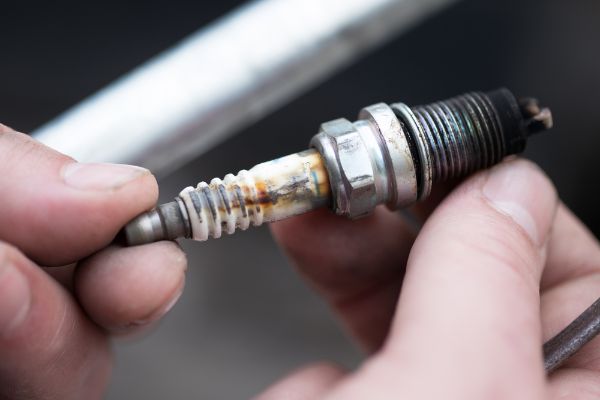Spark plugs help your engine start. They send a small spark that lights the fuel inside the engine. When spark plugs wear out, that spark gets weak. A weak spark makes your engine work harder. You may notice your vehicle runs rough or shakes. A mechanic can check the condition of your spark plugs and tell if you need a spark plug replacement. This is part of regular vehicle maintenance. Most drivers do not know their spark plugs are worn until their engine starts to misfire. Worn spark plugs are a common repair in most general auto repair shops. Fixing this problem early keeps your engine from getting worse.
Spark Plugs and Fuel Economy Problems
Old spark plugs cause poor fuel burn. When fuel does not burn right, your vehicle uses more gas. This means lower fuel economy. A spark plug replacement is a simple fix that helps you save money on fuel. You may also see your check engine light turn on. This can happen when your engine notices a spark or fuel issue. A diagnostic test will show if the spark plugs are the cause. Repair shops can replace your spark plugs fast and check your engine health. Fuel system maintenance includes checking spark plugs to keep everything working together. A general repair shop knows how to fix these issues.
Engine Power Loss From Bad Spark Plugs
Worn spark plugs can make your engine feel weak. You may notice your vehicle does not speed up the same way. It may feel like the engine is slower or not smooth. This is because the spark is not strong enough to burn the fuel right. When the fuel does not burn well, the engine loses power. This can also cause your vehicle to stall. Ignition system repairs are common at most auto shops and include replacing spark plugs. Engine diagnostics can find this problem early. Keeping your spark plugs in good shape helps your engine stay strong.
When to Replace Spark Plugs in Your Vehicle
Most spark plugs need to be replaced every 30,000 to 100,000 miles. It depends on your vehicle and the kind of spark plugs it uses. Some use copper, and others use platinum or iridium. A mechanic can check your service schedule and tell you when to replace them. A spark plug inspection is a normal part of a tune-up. You can also ask your local repair shop to check them if you think something feels wrong. Replacing worn spark plugs can improve fuel economy, increase engine power, and stop other repairs from being needed. It is an easy way to keep your vehicle safe and reliable.
Keep Your Engine Running Right at Brady's
At Brady's, our technicians know how important working spark plugs are for fuel efficiency and engine performance. If your vehicle feels rough, uses too much fuel, or won't start easily, come see us. We offer complete spark plug inspections and replacements. Visit us at Brady's Service Center to schedule your service today.

